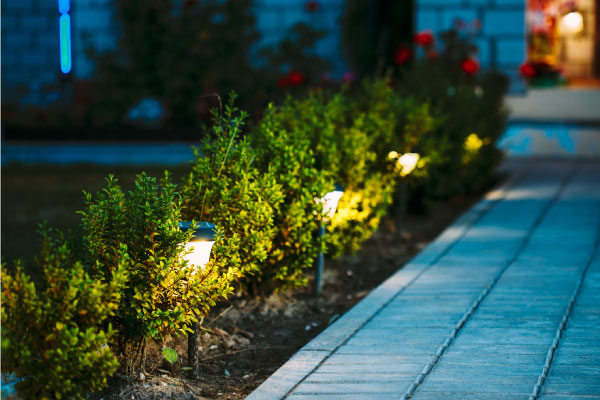
The vast majority of seniors want to maintain their independence by aging in place in their own homes. However, we all undergo physical changes as we age. If you’re hoping to age in place safely and comfortably, then your home should change right along with you.
Many homes require a mix of structural renovations, enhanced safety features, and decor changes. There are also a number of “smart home” solutions that increase safety and peace of mind for seniors and their families.
Exterior Home Safety Features for Aging in Place

Exterior changes are often overlooked – until a fall or other accident happens. Updates to the outside of your home are just as important as interior details.
- Outdoor Lighting: Motion-sensor lights in doorways and along ramps, stairs, and walkways help you easily enter and exit your home without tripping over objects or fumbling for light switches.
- Uneven surfaces: Repair cracked or uneven steps, sidewalks, and driveways that represent falling and tripping hazards.
- Increase stair safety: Install sturdy, non-slip handrails on both sides of the stairs. Use non-slip strips and contrasting colors between the treads and risers.
A no-rise entry with ramps is the safest option, but some homeowners can’t afford the cost. If that’s the case for you or a relative, check with your local Area Agency on Aging about community resources to help you pay the material and labor costs.
Remove and/or Mitigate Fall Hazards
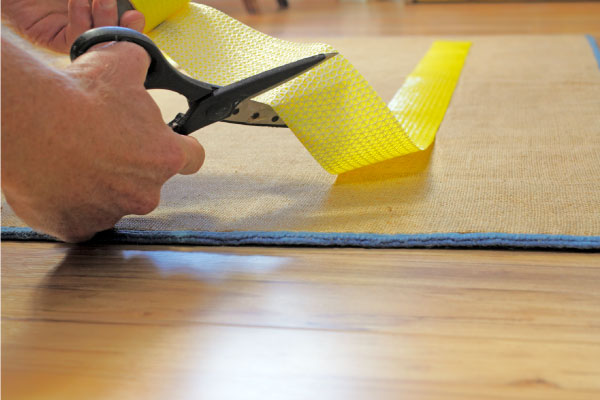
Falls can kill. A 2013 study found that almost 40,000 people age 65 or older went to the ER for treatment after suffering a rug or carpet-related fall. Stairs, clutter, slippery tile, and uneven floors are other common fall hazards. You may need to rearrange your furniture or even remove some pieces in order to create clear paths through rooms.
Additional non-structural solutions include:
- Secure area rugs with adhesive tape or non-skid backing.
- Increase lighting in transition areas between carpet/wood/tile flooring and near stairs.
- Install secure handrails along hallways or in areas with steps, such as a sunken living room, steps into the garage, or similar spaces. Mark those transitions with contrasting tape for extra safety.
Make Inside Stairs Safer
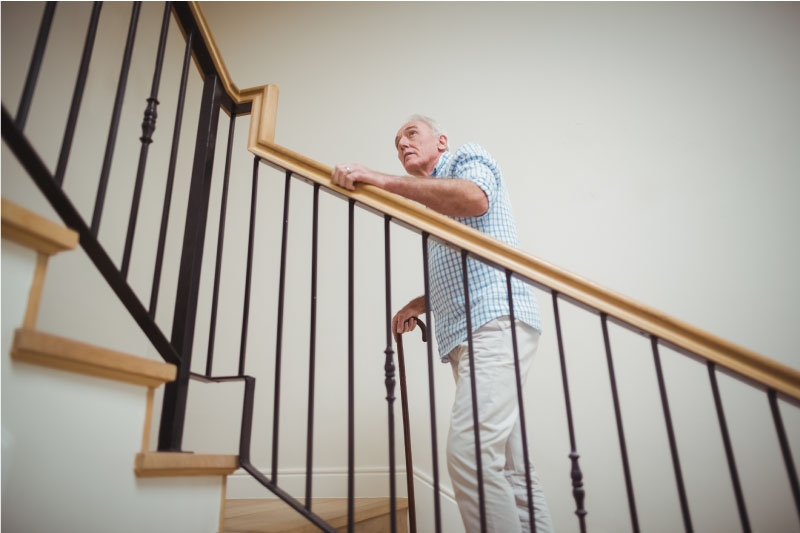
If you live in a multi-level home, then the stairs represent one of the biggest safety hazards in your home. A 2015 study of falls associated with stairs noted that “falls and hip fractures are mentioned as a contributing factor in 40% of admissions to long-term nursing and residential home care.” Falls are more likely to occur (and be more severe) when a person is walking down stairs than when ascending, the report noted:
“To fall down stairs is not only to fall off a cliff, but to fall on rocks below, for the nosing of steps presents a succession of sharp edges.”
Keep stairs free of clutter and install a carpet runner or place non-skid tape on each step.
If all bedrooms are located upstairs, consider repurposing a downstairs room by converting it into a master suite.
A stair lift is often less-expensive alternative to extensive home renovations. Depending on the staircase layout, prices range from $2500 to $7500 or more. Some companies offer rentals, so you can try before you buy. Learn more about choosing a stair lift and strategies for paying for a stair lift since Medicare generally won’t pay for a stair lift.
Modifications That Increase Bathroom Safety
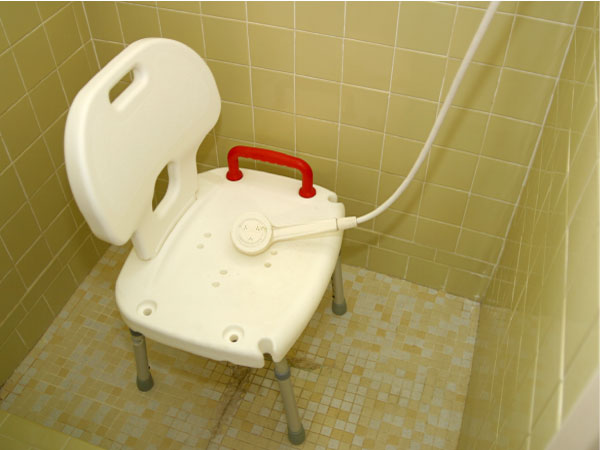
Difficulty with self-care is one of the main reasons seniors enter assisted living facilities, so bathroom safety is critical if you hope to age in place. There are many hazards in the bathroom, but you can’t do without one! You can make it safer, though.
Most bathroom makeover safety solutions are affordable and relatively easy to install, including:
- Shower chairs: While shower chairs and stools are portable, lightweight, and affordable, Medicare generally does not cover their cost. Prices range from $50 – $300. There’s less chance of falling because you’re sitting comfortably while bathing. There are portable, freestanding models and chairs that attach to the tub/shower wall. Learn more about how to choose the best shower chair.
- Raised toilet seats: A raised toilet seat makes it easier for someone with mobility issues to use the toilet independently. Falls often happen when a person stands up quickly from the toilet and becomes dizzy from a sudden fall in blood pressure. Learn more about the types of raised toilet seats, and how to choose the best one for your needs.
- Grab bars and safety rails: Although Medicare generally doesn’t cover grab bars and safety rails, they’re relatively inexpensive. They can help prevent dangerous, even life-threatening, injuries when installed near toilets, in showers, and on bathroom walls. Learn more about how and where to install them in your bathroom.
Walk-in tubs can be very nice additions to any bathroom, but they are expensive ($2500 and up, depending on options) compared to shower chairs. They allow you to walk into the tub enclosure or transfer into the tub from a wheelchair without climbing over a barrier. Some models come with hydrotherapy or aerotherapy to help with circulation and joint problems. Medicare generally doesn’t cover walk-in tubs, and installation costs can be high – particularly if you need to reinforce flooring, modify plumbing, or install a larger hot water heater.
A “Smarter” Home is a Safer Home
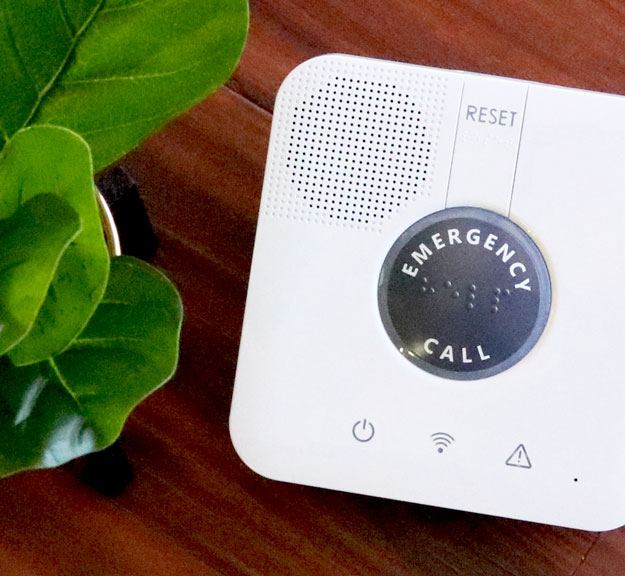
“Smart home technology” is a sprawling term that encompasses everything from a stove with safety sensors to fire alarms and home medical alerts. It can help you compensate for some of the physical changes that come with aging.
- Use voice controls to turn lights on and off.
- Flood sensors and smoke detectors alert you to dangerous situations and call for help automatically.
- Voice-activated medical alert systems can be placed near stairs, in bedrooms and bathrooms, and anywhere you need them. Some wearable medical alert systems have optional automatic fall detection, so the device will alert first responders if you’re unable to call out.
- Smart locks and Medical Alert Lockboxes give caregivers and family members access to the home.
- Door sensors let you know when someone opens an exterior door – very important if a family member is prone to “wandering.”
- Use a video doorbell to see who’s at the door before you answer.
These technologies can make everyday life safer and more convenient for seniors as they age in place and give family members more peace of mind.
Call us at 1-888-799-6255 to learn more about GetSafe’s innovative home medical alert systems. We can help you create a custom solution that works best for your home. You can even try it risk-free for 30 days.







